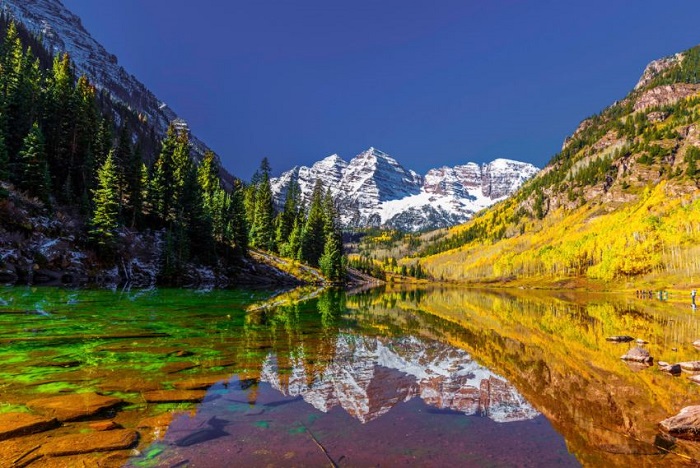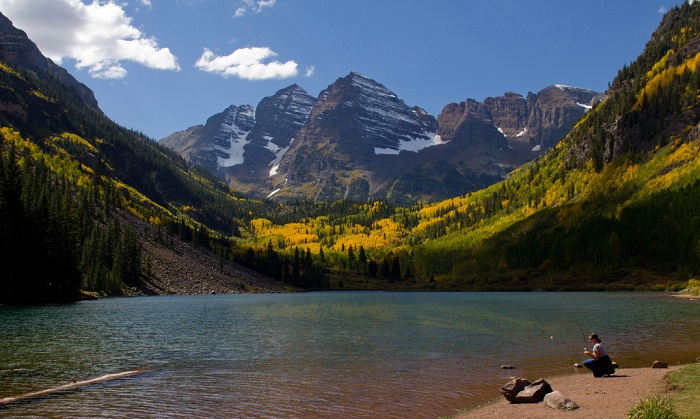Maroon Bells is a place of absolute scenic view of nature. The splendid beauty of Maroon Bells will leave you speechless. Actually, Maroon Bells are two peaks in the Elk Mountains, Maroon Peak and North Maroon Peak, separated by about a third of a mile. This natural landmark is very popular among the tourists. The mountains are on the border between Pitkin County and Gunnison County, Colorado, United States, about 12 miles southwest of Aspen. A reflective lake and two giant snow-striped mountaintops, makes a blissful panorama exemplified by a symphony of color that changes with the seasons. These both peaks are fourteeners (a fourteener is a mountain peak with an elevation of at least 14,000 feet). Maroon Peak, at 14,163 feet, is the 27th highest peak in Colorado. North Maroon Peak, at 14,019 feet, is the 50th highest. There are 96 fourteeners in the United States, all west of the Mississippi River. Colorado has the most (53) of any single state; Alaska is in second place with 29. It is believed that more than 300 million years of geologic activity, including sedimentation, uplift and erosion by wind, water and ice, are credited to the creation of Maroon Valley. The view of the Maroon Bells to the southwest from the Maroon Creek valley is commonly photographed. The best time to visit this sight is autumn, when the Maroon Bells are cradled by cloud-speckled blue skies and golden-hued aspen groves. The peaks are located in the Maroon Bells–Snowmass Wilderness (The Maroon Bells–Snowmass Wilderness is a U.S. Wilderness Area located in the Elk Mountains of central Colorado) of White River National Forest.
A US Forest Service sign on the access trail refers to these mountains as "The Deadly Bells" and warns would-be climbers of "downsloping, loose, rotten and unstable" rock that "kills without warning". The Maroon Bells got their "deadly" name in 1965 when eight people died in five separate accidents. The mudstone is responsible for the Bells' distinctive maroon color. Unlike other mountains in the Rockies that are composed of granite and limestone, the Bells are composed of metamorphic sedimentary mudstone that has hardened into rock over millions of years. Mudstone is weak and fractures readily, giving rise to dangerously loose rock along almost any route.
The Maroon Bells are very popular destination for day and overnight visitors. Over 300,000 people visit the Bells every season. A bus service runs everyday from 8am-5pm from mid-June through the first weekend in October. The bus runs from Aspen Highlands to Maroon Lake every 20 minutes. The Maroon Bells scenic area features several hiking trails ranging from short hikes near Maroon Lake to longer hikes into the Maroon-Snowmass Wilderness. Due to large volume of visitors, the US Forest Service has established a long-term plan to protect and preserve the scenic area.
















0 comments:
Post a Comment